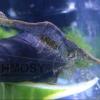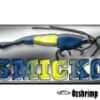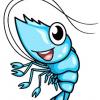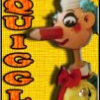Leaderboard
Popular Content
Showing content with the highest reputation on 05/24/14 in all areas
-
I have been experimenting. We have been discussed and talked about feeding shrimp leaves and fruits on many occasions. And the results are quite well documented in the use of leaves like Mulberry, Oak, Indian Almond (Kattapa), etc. However, the idea of feeding shrimp flowers is still very new. After all in the wild, things like leaves, twigs, branches AND flowers all drop into rivers where native shrimps will use a food source. In terms of nutritional value, you will find nutrients and minerals in flowers that are lacking in leaves (and vice versa). I'll expand on one of the main benefits of a nutrient found in flowers that aren't present in leaves a bit later. HOWEVER, NOT ALL FLOWERS ARE SAFE FOR EATING. So we will start with those flowers that are known to be edible. Of course that are literally hundreds of varieties of edible flowers. We all know about cauliflower and broccoli, those are some common flowers we eat regularly. My experiment is limited to what I could source close by. The flowers I tested on my shrimp include Rose, Nasturtium, Dandelion, Chrysanthemum and Pansies. Caveat: I KNOW for sure that these flowers in my backyard have not been sprayed with anything else apart from tap water and rain. No pesticides, fertilisers. If in doubt, DON'T use it. You could try other flowers that are easily sourced in your garden. But please note - I have limited my research and experiments to flowers only. Not the leaves of these flowers. As a cautionary warning, some leaves are sappy and oily, and might not be too safe to feed your shrimp. So I take no responsibility with the leaves of these flowers. Although, Ineke has fed Nasturtium leaves to her shrimp which they seem to like and was safe as mentioned in another thread. Preparation: 1) Pick fresh looking flowers with no visible damage. Select flowers that you KNOW have no previous pesticides or fertilisers, and don't grow down stream from sources of water that might be contaminated. 2) Gently wash them (flowers are very delicate and soft) 3) Remove as much of the base of the flower (the stem, receptacle and sepal). Usually only the petals are what we want. 4a) Place into tank fresh. (Recommended) 4b) Or Blanch it for 1-2 minutes in hot boiling water. Remember, flowers are soft, they don't need to be blanched for much longer. 4c) Freezing or Drying. While it's possible to freeze or dry flowers for storage and feeding at a later date, I'm not sure what nutrients will be lost. 5) Ensure any decayed leftovers are removed if left uneaten after a few days. Review of the flowers: I have searched high and low in the scientific literature for quantitative data on the nutrient content of flower petals. There are relatively few references, particularly in English. Most of the literature is focused on evaluating flowers for their sensory characteristics, such as appeal, size, shape, colour, taste, and above all, aroma, which is important for the cosmetic and perfume industry. Available data on a number of edible flowers show that petals also contain an array of vitamins and minerals, particularly vitamins A and C, various B vitamins, folic acid, and minerals including calcium, magnesium, potassium, iron and phosphorus. Apart from the nutritional value of flowers with the abundance of vitamins and minerals, flowers also contain a huge amounts of carotenoids and flavonoids compared to leaves. Specifically, Crytoxanthin, Zeaxanthin and Lutein which is obviously lacking in the leaves. Just look at the pretty colours of flowers. Zeaxanthin and Lutein has been known as a natural source of colour enhancement in fish (and maybe shrimp). These carotenoids are regularly added to fish food from sources like spirulina. Zeaxanthin enhances the Reds and Oranges while Lutein enhances Yellows. Flowers are also high in antioxidants, they are antiseptic, antifungal and anti-inflammatory. This sounds too good to be true. It's like feeding medicine to your shrimps to fight viruses and bacteria. On to the review of specific flowers. Dandelions: Say what?! That's a weed! It sure is, and I have heaps growing in my front garden. Now I have a use for them. Dandelion is a perennial plant with jagged, bright green leaves to 30cm long, a hollow flower stem to 30cm and one terminal yellow daisy. Has been subject of many studies investigating it's ability to even fight cancer! Dandelions, contain numerous flavonoids and carotenoids with antioxidant properties, including four times the beta carotene of broccoli, as well as lutein, cryptoxanthin and zeaxanthin. They are also a rich source of vitamins, including folic acid, riboflavin, pyroxidine, niacin, and vitamins A, B, C and D. Minerals including iron, potassium and zinc. The rich yellow colour of dandelion flowers comes from beta-carotene - Lutein specifically. Side note: the leaves are apparently also really high in Calcium (187mg per 100g), rivalling Mulberry leaves. But I have not tried feeding Dandelion leaves, nor do I know if they are safe. But people eat them. The Chinese, European and Native American have been using the dandelion plant for centuries to treat digestive, kidney and liver ailments. I fed my shrimp a fresh dandelion as one experiment. The first day in the tank, the shrimp investigated it, but didn't seem to be eating. It wasn't till the 3 day that I noticed them actually munching on the flower. The petals probably needed to soften first. The second experiment was with a blanched dandelion. This time the shrimp took to it the same day. And average sized flower was consumed within 3-4 days in my tank. Verdict: Big tick. They loved it. Too early to tell if there is any impact on colouration of the shrimps. Nasturtiums: Nasturtium is a PERENNIAL growing to 0.5 m (1ft 8in) by 1 m (3ft 3in). It is part of the Watercress family. The most common variety is Tropaeolum majus. The peppery flowers are good in salads and pasta dishes. A 2009 study by the Universidad Nacional de Colombia identified the group of phenols or phenolic compounds in the pigments of orange and red flowers of Tropaeolum majus as anthocyanins. Anthocyanins, which are abundant in blueberries and red cabbage, help neutralise the damaging effects of free radicals, thereby helping to protect us from chronic diseases such as cardiovascular disease and cancer. Anthocyanins are anti-inflammatory, antimicrobial, anticancer and antioxidant. Nasturtiums are high in Vitamin C, about 45 milligrams vitamin C per 100 grams, and also contain Vitamin A and flavonoids anti-oxidants like - carotene, lutein and zeaxanthin. They also contain Minerals like Iron, Calcium. Nasturtiums might not pack as much nutritional value as dandelions, but it sounds great to feed shrimp occasionally, to combat diseases due to it's antibiotic, antiseptic, and antifungal properties. I fed Nasturtium flowers to my shrimp in a similar fashion to Dandelions. Fresh and Blanched. The shrimp had very similar reactions. They ate it when the flowers were soft. Verdict: Another big tick. They loved it. Too early to tell if there is any impact on colouration of the shrimps. I do have one shrimp that looks unwell. I'm keeping an eye to it to see if there are any improvements. I won't go into detailed reviews on the Rose, Pansies or Chrysanthemum flowers, as I couldn't find much information on it's nutritional value. But the results are very similar. There are dozens of other edible flowers that could be introduced to your shrimp as long as you take the necessary precautions on where you collect these flowers. Some other possibilities include: Daisies, Sunflowers, Daylilies, Violets, Tulips.1 point
-
Just ensure your GH is between 4-6, and your TDS is <180.... And don't forget to use some mineral powder1 point
-
1 point
-
It was a pleasure to meet you and your family Jen! Just wish we could have gotten to the bottom of the problem. Think I was too focused on the awesome berried red cherries. :) Such a beautifully setup tank. Hope it settles soon. Like I said, happy to pay forward the kindness and generosity that other forum members have extended to me over the last year.1 point
-
Anemones have settled and looking amazing....still formulating a feeding/maintenance schedule to ensure phosphates are kept >0.02.... Can't wait for my marine lights to arrive, and get the anemones to really colour up under the blue lights.....delighted with the progress to date :-)1 point
-
Curious to know if shrimp are able to absorb calcium if they have a vitamin difficency. Reason I ask is humans can not absorb calcium if vitamin d levels is down. It also raises other question re the importance of light to absorb vitamin d to aid calcium obsorbtion. My head scratcher for the day hmmm1 point
-
Short answer = Yes. That's why we go on and on about water Hardness (GH), the measure of quantity of divalent salts in the water. The hardness of a water sample is reported in milligrams per liter (same as parts per million, ppm) as calcium carbonate (mg/l CaCO3). Calcium carbonate hardness is a general term that indicates the total quantity of divalent salts present and does not specifically identify whether calcium, magnesium and/or some other divalent salt is causing water hardness. Hardness can be a mixture of divalent salts. In theory, it is possible to have water with high hardness that contains no calcium. Calcium is the most important divalent salt in fish culture water. Calcium has an important role in the biological processes of fish and shrimp. It is necessary for bone formation, blood clotting and other metabolic reactions. Fish and shrimp can absorb calcium for these needs directly from the water or food. The presence of free (ionic) calcium at relatively high concentrations in culture water helps reduce the loss of other salts (e.g. sodium and potassium) from fish body fluids (i.e. blood). And for shrimp, calcium is required for development of their carapace (shell). This is where magnesium comes into play. Without magnesium, the calcium is not made available for absorption by the fish or shrimp. You can dose all the Calcium sulphate in the world but if there is not enough magnesium, it will be useless. See BlueBolts post in Water Parameters for dosage levels. I also wrote an article about calcium/magnesium called "Why the need for Calcium & Magnesium", which recommends a target level of calcium to aim for in freshwater tanks.1 point
-
Just thought I'd share my findings about a produce I hadn't seen before. I was wandering through Coles doing my shopping(since found out this is available at Woolworths too) & I stumbled across a product in the fresh food section, it called "Kool Kale" it's basically a bunch of fresh Kale & so I bought some to test. After following BB's recommendation on a different tread & soaking then boiling for about 20mins I rinsed it in cold water & stuck some in my cherry tank first, then the CRS/CBS cull tank with surprising results, the pics are within 5mins of the Kale being put in the tanks :victorious:1 point
-
1 point
-
As promised here are some pics on how I grow biofilm at work. We use polycarbonate sheets, a material used in abalone aquaculture for biofilm culture. Note two things that make it ideal for the purpose 1: massive surface area to volume ratio, 2: clear allows easy viewing of biofilm growth. We use pvc pipe to hold the plates upright (abalone farmers use baskets) to maximise exposure to light and prevent too much sediment from settling on the plates. There are two factors I believe that will greatly improve your biofilm growth. 1. Water flow. Moving water promotes growth on surfaces and slows greenwater growth in freshwater, allowing your biofilm to outcompete it. 2. Nutrients. If biofilm growth is slow, we add fertiliser. Alternatively just use water from yiur aquariums as this is generally quite high in nutrients. This is a single plate: note that on the plate you can see areas that are different to others, indicating different organisms growing on different parts of the plates. The following are pics of scrapings taken from the plates at either 40 or 100 times zoom: Long green things are filamentous algae, brown round things are diatoms Diatoms The grey things in these are stalked ciliates, attached by their stalks, they filter feed using their bulbous heads. Brown stuff is diatoms. Some diatoms and a macroalgae (seaweed) germling. Some more diatoms but notice the chains of bigger diatoms through the middle. These are motile i.e. they move. Crazy. A copepod (centre - grey coloured) found amongst the biofilm. More biofilm with an unidentified 'worm-like' organism Other random shots All of these scrapings came from plates cultured in the same raceway. Now that see can see this complexity, you can understand why one vegetable/food item just can't compare. Utilising my experience with this technique I built my own biofilm plates for growing biofilm for pleco fry. The plates are roughly 200*200mm and 10mm apart. It allows fry in to feed and stops adults from eating everything before the fry. only problem is that the polycarbonate has split (look closely) around the nylon bars. I think I'll move back to using PVC pipe to hold them apart.1 point
-
There are very few stupid questions, yours isn't one of them. In the context of aquarium keeping, Biofilm is a collection of bacteria, diatoms, algae, fungi and other multi-cellular organisms that form a layer on any surface submerged in water (including seawater). Biofilms form because macro-molecules (e.g. Sugars, proteins) attach to surfaces because surfaces (at the molecular level) are polar (i.e. have positive and negatively charged areas). And bacteria are the first to attach to these surfaces to make use of these molecules. The bacteria make the surfaces attractive for settlement of other organisms. Each surface also has a unique biofilm depending on what molecules, bacteria or other organisms attach to it. This is more than the average shrimp keeper needs to know. The important thing shrimp keepers need to know is that shrimp eat this biofilm and it forms an important part of their diet. Hence why we feed our shrimp IAL and similar leaves, because as these leaves break down their surfaces are colonised by micro-organisms which the shrimp eat.1 point











